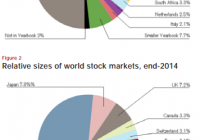Global And Short-Term Treasury: 2 ETFs To Watch On Outsized Volume
In the last trading session, the U.S. stocks ended their five-day losing stretch on strong earnings reports and stabilization in the Chinese market. Among the top ETFs, investors saw the SPDR S&P 500 Trust ETF (NYSEARCA: SPY ) gain 1.2%, the SPDR Dow Jones Industrial Average ETF (NYSEARCA: DIA ) move higher by 1.1% and the PowerShares QQQ Trust ETF (NASDAQ: QQQ ) gain 0.9% on the day. Two more specialized ETFs are worth noting as both saw trading volume that was far outside of normal. In fact, both these funds experienced volume levels that were more than double their average for the most recent trading session. This could make these ETFs ones to watch out for in the days ahead to see if this trend of extra-interest continues: iShares MSCI ACWI (All Country World Index) Index ETF (NASDAQ: ACWI ) : Volume 4.9 times average This global ETF was in focus yesterday as about 5.6 million shares moved hands compared to an average of roughly 1.2 million shares. We also saw some price movement as ACWI gained 1.2% in the past session. The movement can largely be blamed on lower oil prices, uncertain economic growth worldwide, and a possible interest rate hike, which can have a huge impact on global stocks like the ones we find in this ETF portfolio. For the past one-month period, ACWI was down nearly 2.2%. The fund currently has a Zacks ETF Rank #3 (Hold). S chwab Short-Term U.S. Treasury ETF (NYSEARCA: SCHO ) : Volume 4.0 times average This short-term treasury ETF was under the microscope yesterday as more than 693,000 shares moved hands. This compares to an average trading day of around 181,000 shares and came as SCHO lost 0.4% in the session. The big move was largely the result of the uncertainty over the Fed’s interest rate outlook ahead of its meeting. SCHO added 0.2% in the past month and currently has a Zacks ETF Rank #3. Link to the original article on Zacks.com Share this article with a colleague
